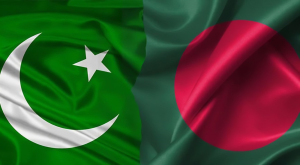As political and economic turbulence grips South Asia, the comparison between Bangladesh and Pakistan becomes increasingly poignant. Despite their shared history, with Bangladesh once being a part of Pakistan, the two nations have evolved in markedly different ways, especially in their responses to political and economic injustices. This article explores how Bangladesh’s proactive stance contrasts with Pakistan’s current challenges.
The Historical Context

Bangladesh and Pakistan share a common past, with Bangladesh formerly known as East Pakistan until its independence in 1971. This separation marked a significant turning point in the history of both nations. While Bangladesh embarked on its journey of nation-building, Pakistan continued its trajectory, grappling with its own set of political and economic issues.
The Rise of Bangladesh
In recent years, Bangladesh has made headlines for its economic growth and vibrant democratic processes. The country has shown remarkable resilience and dynamism, emerging as a significant player in the global economy. Its people have demonstrated a robust sense of agency, particularly in the face of political and economic adversities. The recent removal of Prime Minister Sheikh Hasina, driven by widespread protests and public discontent, underscores the active role that citizens play in shaping their nation’s future.
The movement against Hasina’s administration was a testament to the Bangladeshi public’s willingness to stand up against perceived corruption and mismanagement. The protests, while intense, were a clear indication of a society that demands accountability and transparency from its leaders. The country’s ability to mobilize large-scale protests and push for political change highlights a vibrant civil society committed to democratic values.
The Current Situation in Pakistan
In contrast, Pakistan faces a different set of challenges. The nation is currently experiencing political instability and economic difficulties, but the public response has been relatively muted compared to Bangladesh. There are several factors contributing to this difference.
Firstly, Pakistan’s political landscape has been marred by persistent corruption and mismanagement. This has led to widespread disillusionment among the populace. Economic issues, including inflation and unemployment, have further exacerbated the situation. However, public protests and movements have been less pronounced, partly due to the political climate, which often stifles dissent and restricts freedom of expression.
Moreover, there is a noticeable sense of resignation among many Pakistanis, who feel disempowered and skeptical about the efficacy of protest and political action. This apathy is compounded by a lack of trust in political institutions and a perception that individual efforts may not lead to substantial change.
Comparing the Public Response
The differences in public response between Bangladesh and Pakistan can be attributed to several factors:
- Historical Experiences: Bangladesh’s struggle for independence and subsequent nation-building efforts have fostered a strong sense of national identity and activism. In contrast, Pakistan’s political history has been marked by periods of military rule and political instability, which may have contributed to a more passive public stance.
- Civil Society Engagement: Bangladesh has a vibrant civil society that actively engages in political discourse and advocacy. The recent protests against the Prime Minister reflect a culture of accountability and democratic participation. In Pakistan, while civil society exists, its effectiveness is often limited by political repression and a lack of resources.
- Media and Communication: Bangladesh’s use of media and communication platforms to mobilize public opinion has been effective in driving change. In Pakistan, media freedom is often constrained, and access to information is limited, which affects the public’s ability to organize and respond to injustices.
The contrasting public responses in Bangladesh and Pakistan highlight significant differences in political engagement and activism. While Bangladesh’s recent history reflects a population actively standing against injustice and demanding accountability, Pakistan faces a more subdued public response amid ongoing political and economic challenges. Understanding these dynamics is crucial for both nations as they navigate their paths toward stability and prosperity.
As the situations in both countries continue to evolve, it is essential for citizens and leaders alike to foster an environment where democratic values and public engagement can thrive, ultimately leading to a more equitable and just society.
To Keep Updated Visit & Follow our Facebook Page Or Our Website





